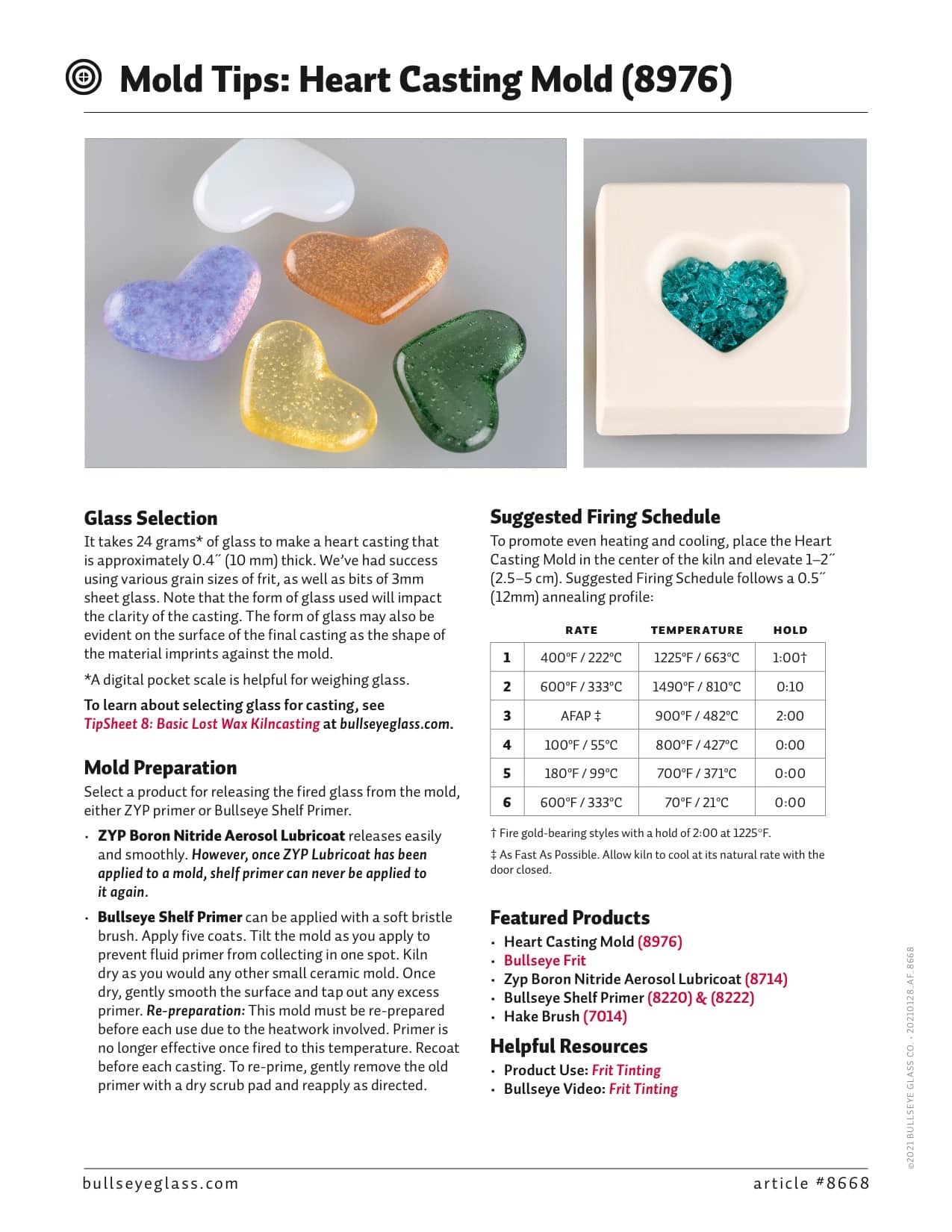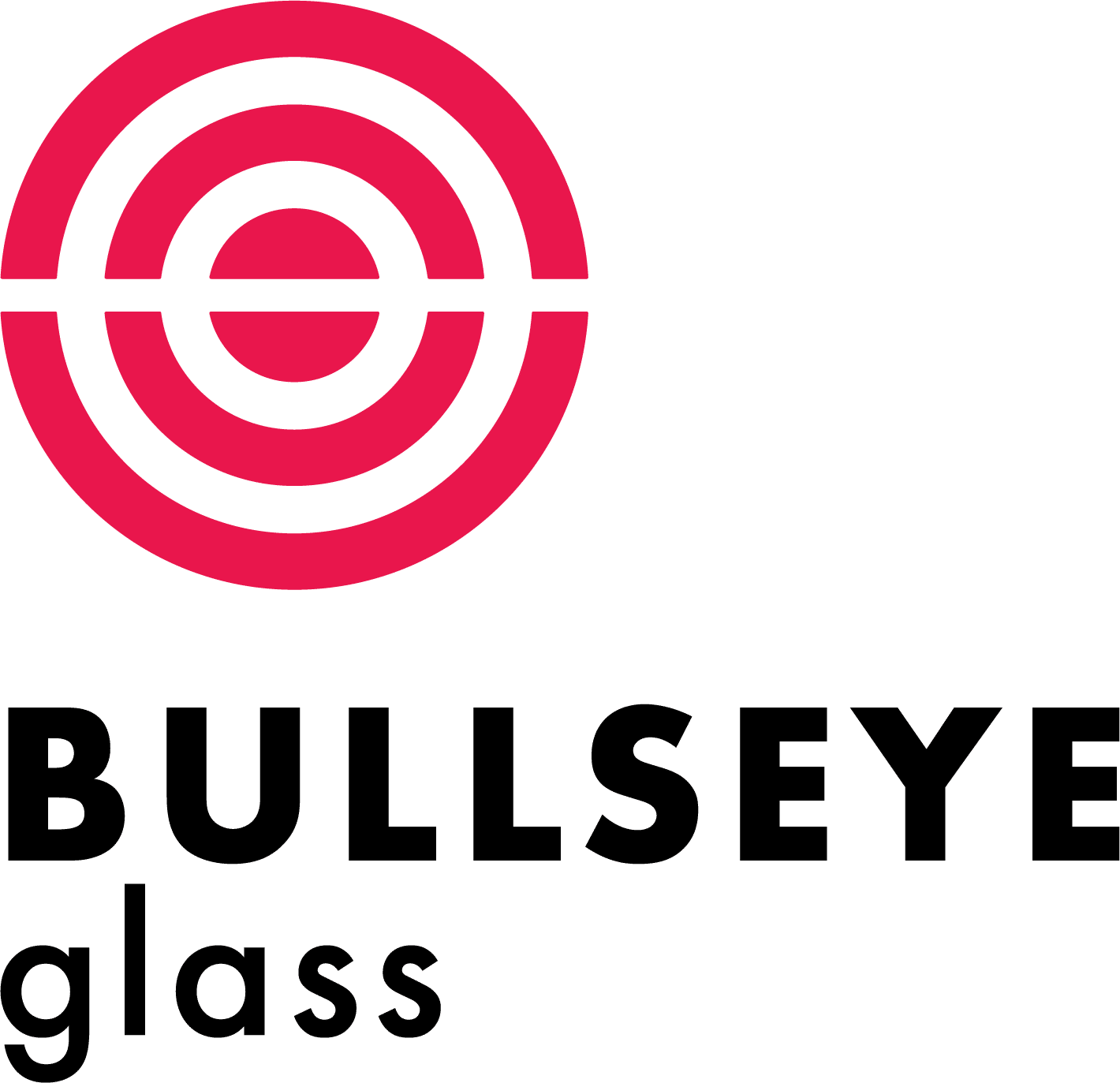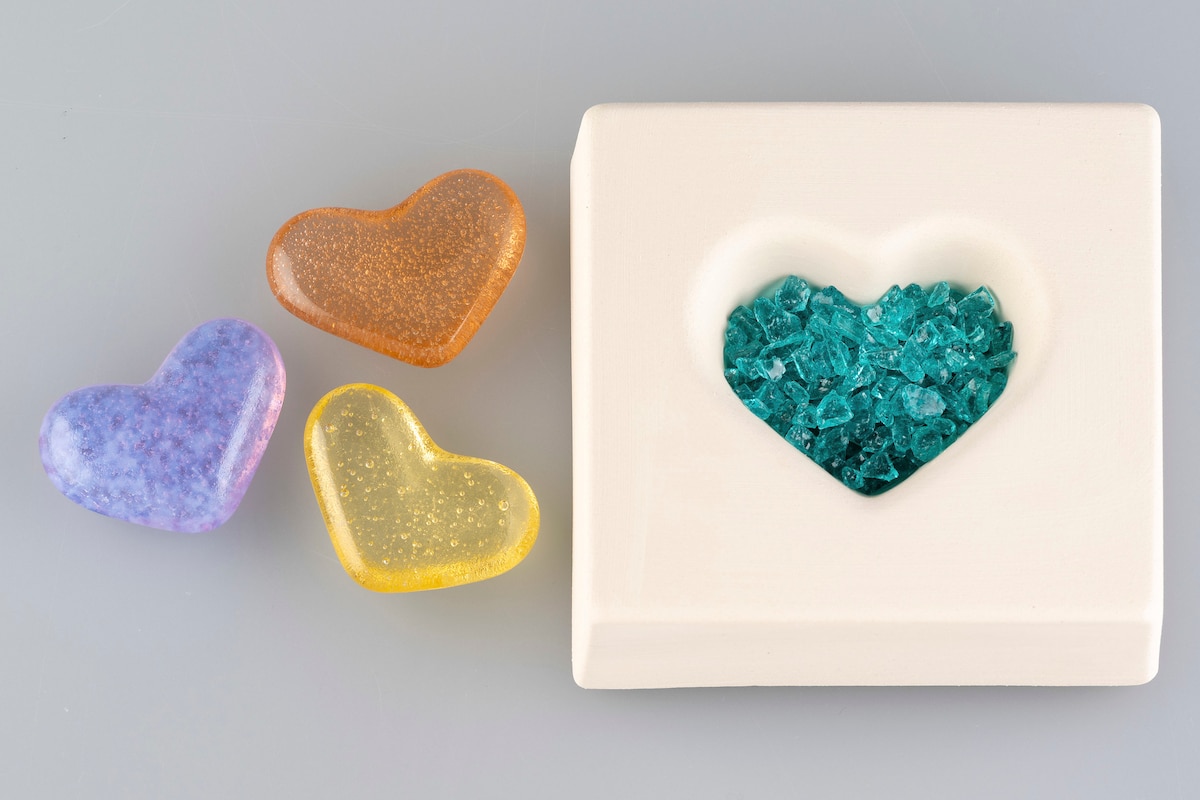Glass Selection
It takes 24 grams of glass to make a heart casting that is approximately 0.4˝(10 mm) thick (pictured). Examples shown were made with frit, but any form of glass may be used to fill the mold. For a thicker casting, use more material. For reference, 50 grams resulted in a 0.7˝ (18 mm) thick casting, and 67 grams fired to a thickness of 0.8˝(21 mm). Modify the schedule provided with an appropriate annealing profile based on thickness, starting with the hold in Segment 3. (See Annealing Thick Slabs at bullseyeglass.com) To learn about selecting glass for casting, see Bubble Population and TipSheet 8: Basic Lost Wax Kilncasting at bullseyeglass.com.
Mold Preparation
Select a product for releasing the fired glass from the mold, either ZYP primer (preferred) or Bullseye Shelf Primer.
1. ZYP Boron Nitride Aerosol Lubricoat releases easily and smoothly with a glossier surface than shelf primer. However, once ZYP Lubricoat has been applied to a mold, shelf primer can never be applied. See ZYP Tips for directions.
2. Bullseye Shelf Primer, while more cost effective, does not release as easily and is more labor intensive. During application, tilt the mold to prevent primer from collecting. Apply five coats, then kiln dry as you would any other small, ceramic mold. Once dry, gently smooth the surface and tap out any excess primer. For complete directions, see Using Bullseye Shelf Primer.
Re-Preparation
Regardless of separator, the Heart Casting Mold must be re-prepared before each kilncast firing. To buff away fired ZYP, use a nylon bristle brush. To buff away fired Bullseye Shelf Primer, use a dry scrub pad such as Scotch-Brite. A small, stiff-bristled paintbrush may be helpful with either separator.
Surfaces
Expect matte to semi-matte surfaces where the glass contacted the mold during firing. On these surfaces, you may also see outlines of the glass pieces that were used to load the mold. The mold-contact surfaces of a heart made from frit, for example, may display faint dappling that mirrors the random pattern of the frit. Conversely, surfaces that did not touch the mold will be glossy.
Download the full article…


